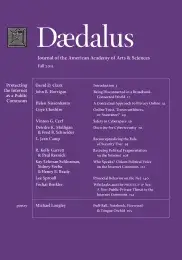Prosocial Behavior on the Net
Volunteers and charitable organizations contribute significantly to community welfare through their prosocial behavior: that is, discretionary behavior such as assisting, comforting, sharing, and cooperating intended to help worthy beneficiaries. This essay focuses on prosocial behavior on the Internet. It describes how offline charitable organizations are using the Net to become more efficient and effective. It also considers entirely new models of Net-based volunteer behavior directed at creating socially beneficial information goods and services. After exploring the scope and diversity of online prosocial behavior, the essay focuses on ways to encourage this kind of behavior through appropriate task and social structures, motivational signals, and trust indicators. It concludes by asking how local offline communities ultimately could be diminished or strengthened as prosocial behavior increases online.
In 2009, 63.4 million Americans contributed more than 8 billion hours of volunteer service in the offline world. With the exception of short-term service and relief programs like Habitat for Humanity, most volunteering benefits a volunteer’s local community and consists of fundraising/selling items to raise money (26.6 percent of volunteers); collecting, preparing, distributing, or serving food (23.5 percent); engaging in general labor or providing transportation (20.5 percent); and tutoring or teaching (19 percent).1 Beneficiaries are designated by the community as needy and worthy; they are typically children, the poor, the aged and infirm, and community resources such as libraries, schools, and parks. Volunteers and volunteer organizations enhance local community welfare by improving the situation of direct beneficiaries and by increasing community members’ social capital: the bonds of trust and reciprocity created in social networks.
Volunteering is a form of what psychologists call prosocial behavior, that is, discretionary behavior such as assisting, comforting, sharing, and cooperating intended to help people other than oneself. Organized prosocial behavior is planned, relatively long-term, non-obligated by family or friendship, and situated within an organizational context. Organized prosocial behavior in the form of charitable donation of time and money represents an enormously important social resource in the offline world.
. . .
